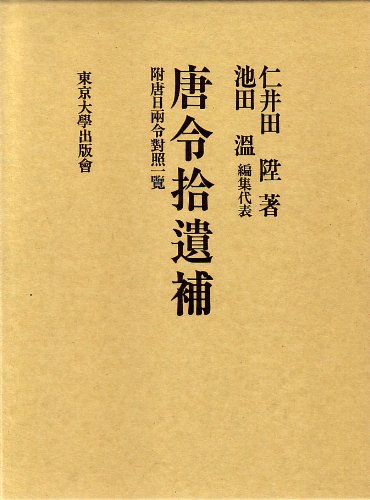2 0 0 0 IR 唐代の郡望表(上):九・十世紀の敦煌写本を中心として
- 著者
- 池田温
- 雑誌
- 東洋学報 / The Toyo Gakuho
- 巻号頁・発行日
- vol.42, no.3, pp.293-331, 1960-06
In recent years, some works of Prof. N. Niida (仁井田陞) and Prof. W. Eberhard have added considerably to the study of the caste system (身分制度) of old China. Their studies of intra-caste marriage (Ebenbürtigkite) in hundreds noble families between the period of the Six Dynasties and the beginning of the T'ang Dynasty especially valuable in the study of the caste system of China, notwithstanding the former regards it as ancient aristocracy, the latter regards it as medieval gentry. The basic data for research on this question is the lists of county nobles found at Tun-huang. However, the qualification of this document as data has been in doubt, with Hsiang Ta (向達) and K. Utsunomiya (字都宮清吉) etc. taking the viewpoint that it is the Chên-kuan-Shih-tsu-chih compiled at the order of the Emperor T'ai-tsung and with Mou Jun-sun (牟潤孫) taking the viewpoint that it was forged by poverty-stricken member of famous nobles with the intention of raising the marriage price.After an inclusive study of materials concerning to this subject the author reached the following conclusions: 1) The following items discovered at Tun-huang are tables of county nobles which may be called Chün-wang-piao 郡望表 (lists of county nobles) and have no connection with the Chên-kuan-Shih-tsu-chih (貞観氏族志). A) 位字79號 (incomplete roll copied by a bhiksu Wu-chên in 836 A. D.). B) S.5861 (4 fragments) & P.3191 (incomplete). C) S. 2052. D) P.3421 (incomplete). 2) The records of distinguished family-names in many counties contained in the T'ai-p'ing-huan-yü-chi (太平寰宇記), Kuang-yün (廣韻) and Ku-chin-hsing-shih-shu-pien-chêng (古今姓氏書辯證), are also reckoned to have their sources in the lists of same category. 3) On careful comparison with the descriptions of several Sung (宋) bibliographies, we may identify A with the Chou-shih-tsu-p'u (諸氏族譜), and B and the list in T'ai-p'ing-huan-yü-chi with the T'ien-hsia-chün-wang-shih-tsu-p'u (天下郡望氏族譜). 4) These lists of county nobles have neither official nor authentic character, but are the products of popularity, and differentiating into some variations they spread over to wide people. 5) The intra-caste marriage system found in these lists has some reflection of the real circumstances in the former period, but on the other hand we can not deny it include the element of fiction. 6) The origin of these lists perhaps had any connection with the Clan-adjustment policy of Emperor Hsiao-wen of Northern Wei dynasty, and afterwards their diffusion has been continued in the decline period of nobilities.
